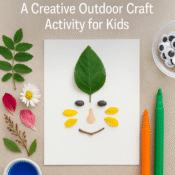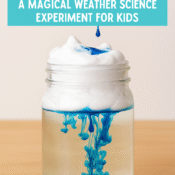
Pinwheel Science for Focus & Calm: A Hands-On Activity to Boost Mindfulness Through STEM
Why Kids Need Focus & Calm Today
In an age of fast screens, constant notifications, and crowded schedules, many children struggle to focus or wind down. Teachers see it in restless classrooms. Parents see it during bedtime meltdowns or homework blocks. The solution doesn’t always lie in more instructions—but in meaningful engagement.
Children often learn best when their hands and minds are working together. Activities that blend science with self-regulation skills can provide a double benefit: nurturing curiosity while cultivating calm.
Enter the pinwheel—a simple yet powerful STEM-meets-mindfulness tool.
The Science Behind the Spin: How Pinwheels Calm the Mind
Pinwheels may look like simple toys, but they offer an accessible gateway into several core learning concepts:
- Physics of Airflow – Kids experience cause and effect: breath creates movement.
- Engineering Design – From choosing materials to assembling blades, children experiment with balance and force.
- Breathing Regulation – Slow, deep breathing needed to spin a pinwheel improves focus and relaxation.
- Mindfulness & Observation – Watching the steady spin can anchor attention and soothe racing thoughts.
This cross-disciplinary approach connects science and emotional intelligence—empowering kids to understand not only how things work, but also how they feel.
Here’s how to turn a basic craft into a meaningful, multi-layered experience—perfect for classrooms, therapy groups, or family bonding.
Your Step-by-Step Guide: Making a Mindful Pinwheel Lab
Materials You’ll Need:
- Square paper (15cm x 15cm) – cardstock or printable design
- Pencil and ruler
- Scissors (child-safe)
- Pushpin or brass fastener
- Pencil with eraser or straw for the handle
- Optional: printable designs (see PDF below)
Step 1: Measure & Mark
Using the ruler, draw two diagonal lines from corner to corner to form an “X.” Mark about 2/3 of the way along each line (not all the way to the center).
Step 2: Cut
Cut along each diagonal line only up to the marked point. Do not cut all the way to the centre.
Step 3: Fold
Fold every other corner tip toward the center without creasing the paper. You should have a gentle swirl forming.
Step 4: Pin & Secure
Push the pin through the centre of the folded tips. Then, insert it into the eraser of your pencil or a pre-cut straw with a soft backing. Make sure it spins freely.
Step 5: Breathe & Observe
Ask your child to take a slow, deep breath and blow. Notice the speed, rhythm, and direction of the spin. What happens when they breathe fast? Or slow?
Extended Learning: Ideas for STEM + SEL Integration
Use the finished pinwheel as a launchpad for deeper learning. Try the following guided activities:
Focus Builder: Breathing Race
Use a timer and challenge children to make the pinwheel spin for 10 seconds using only nose breaths. This encourages controlled breathing and body awareness.
Airflow Explorer
Test pinwheels in front of a fan, near a window, or outdoors. Have kids record the conditions and spin speed—great for introducing data recording and variables.
Emotional Anchor
Use the pinwheel as a calm-down tool. Whenever a child feels overwhelmed, guide them to “breathe through the pinwheel” for three rotations.
Creative Twist
Let kids decorate their own pinwheels with patterns, colour themes, or calming words like “breathe,” “focus,” or “calm.” Personalising builds emotional connection.
Quick Variant: Printable Pinwheel Meditation Cards
Short on time or supplies? Use our Printable Pinwheel Reflection Cards. These include:
- Ready-to-colour pinwheel templates
- Breathing prompts (“Inhale for 3… Exhale for 4…”)
- Mini STEM facts about motion, wind, and airflow
- Space for journaling how the activity made them feel
Great for rainy days, school mindfulness corners, or travel-friendly self-regulation kits.
Download & Print
To support hands-on use, we’ve bundled a full Pinwheel Science for Focus & Calm kit into a printable PDF. It includes:
- Printable pinwheel templates (with calming designs)
- Illustrated folding & cutting guide
- Classroom STEM extension cards
- Breathing reflection worksheet
- Editable parent-teacher usage license
[Download your free kit here – Pinwheel-Science-Calm-Kit.pdf]
What Other Parents & Educators Say
“We used the pinwheel project in our Year 2 classroom and saw a noticeable shift in focus during transitions. The science link kept students engaged!”
— Rachel M., Primary Teacher, NSW
“My son with ADHD now keeps a pinwheel on his desk. It’s his way of ‘resetting’ when he feels overwhelmed. It works better than I expected.”
— Karla D., Parent
Keep the Calm Flowing: Where to Go Next?
Looking for more mindfulness + STEM hybrids? explore our full Mindful Activities Archive.
Final Thoughts: Small Spins, Big Impact
A pinwheel may seem simple—but in the hands of a curious child, it becomes a powerful tool. One that teaches motion and mindfulness. Science and self-awareness. Cause and calm.
Sometimes, all it takes is a deep breath—and a little spin—to bring kids back to focus.




